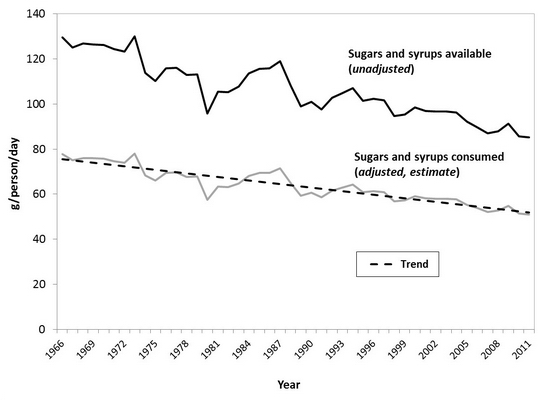Quoi de neuf
Consommations approximatives et sources des sucres totaux et ajoutés dans l'alimentation canadienne
Consommations approximatives et sources des sucres totaux et ajoutés dans l'alimentation canadienne
Tristin D. Brisbois1, Sandra L. Marsden1, G. Harvey Anderson2, and John L. Sievenpiper3,4.
1Nutrition Information Service, Canadian Sugar Institute, Toronto, Canada
2Program in Food Safety, Nutrition and Regulatory Affairs, Department of Nutritional Sciences, Faculty of Medicine, University of Toronto, Toronto, Canada
3Department of Pathology and Molecular Medicine, Faculty of Health Sciences, McMaster University, Hamilton, Canada
4Toronto 3D Knowledge Synthesis and Clinical Trials Unit, Clinical Nutrition and Risk Factor Modification Centre, St. Michael's Hospital, University of Toronto, Toronto, Canada
Nutrients, 2014, 6(5);1899-1912.
Abstract:
National food supply data and dietary surveys are essential to estimate nutrient intakes and monitor trends, yet there are few published studies estimating added sugars consumption. The purpose of this report was to estimate and trend added sugars intakes and their contribution to total energy intake among Canadians by, first, using Canadian Community Health Survey (CCHS) nutrition survey data of intakes of sugars in foods and beverages, and second, using Statistics Canada availability data and adjusting these for waste to estimate intakes. Added sugars intakes were estimated from CCHS data by categorizing the sugars content of food groups as either added or naturally occurring. Added sugars accounted for approximately half of total sugars consumed. Annual availability data were obtained from Statstics Canada CANSIM database. Estimates for added sugars were obtained by summing the availability of "sugars and syrups" with availability of "soft drinks" (proxy for high fructose corn syrup) and adjusting for waste. Analysis of both survey and availability data suggests that added sugars average 11%-13% of total energy intake. Availability data indicate that added sugars intakes have been stable or modestly declining as a percent of total energy over the past three decades. Although these are best estimates based on available data, this analysis may encourage the development of better databases to help inform public policy recommendations.



